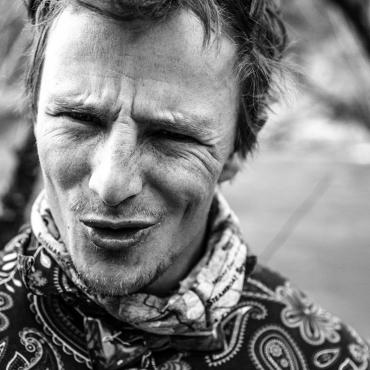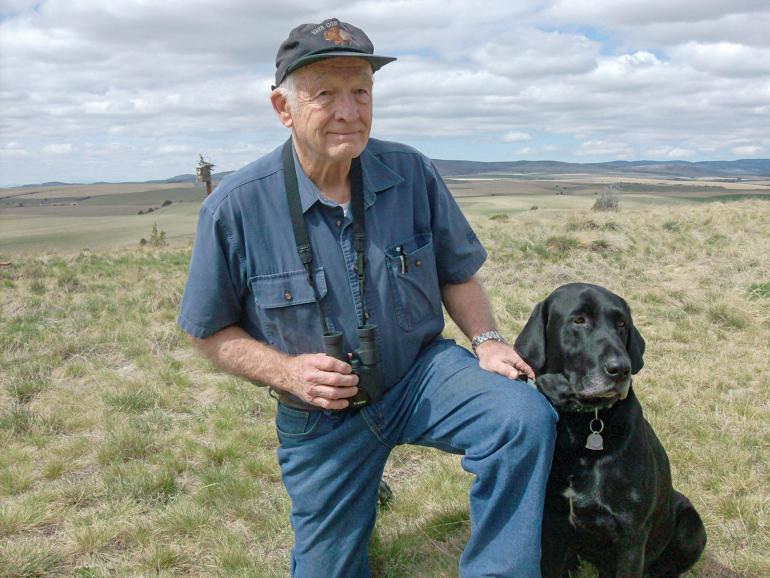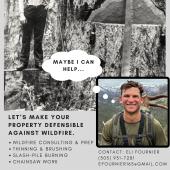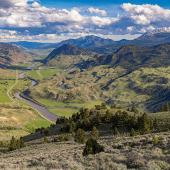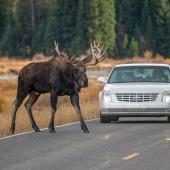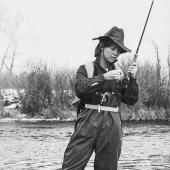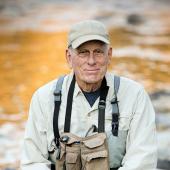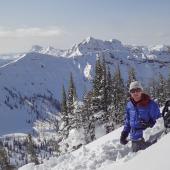RIP: Jim Bailey
One of Bozeman’s most devout bison advocates.
“If there be no place for wild bison in all of Montana, then surely we have crossed a line from the Last Best Place to the Once Best Place.” —Jim Bailey
When it comes to advocacy, two basic types of people come to mind. There are those who show their stripes through t-shirts and bumper stickers. They attend pint nights to support groups they admire, fill out their ballot on important issues, and send in public comment when it’s convenient. Then there are those who make up the vanguard. Those who live, breathe, and push matters in a direction of actual change. Jim Bailey was one of the latter.
Jim’s passion for wild animals and their habitat can be traced back to childhood hunting trips with his father, and becoming an Eagle Scout in Illinois. He made a career in wildlife management, earning a Ph.D. in Wildlife Biology and spending over 20 years as a professor at Colorado State University. When he moved to Bozeman in 2005, his focus narrowed in on wild bison.
When I asked Jim's wife, Nan, what he liked to do for fun, she looked at me dumbfoundedly and laughed. “His work was his passion,” she said. “He wasn’t very jovial, but he was bright, and he couldn’t be bamboozled."
Though retired, Jim made it his full-time goal to get the animal back in the hands of the public trust. As coordinator of the Montana Wild Bison Restoration Coalition, he led the uphill battle to get them reintroduced on the Charles M. Russell Wildlife Refuge. He often noted that there wasn’t a single wild herd of bison left in Montana. Then, anticipating the crowd’s rebuttal of Yellowstone: “Those visit us, sure, but they live in Wyoming.”
Jim penned multiple books, including American Plains Bison: Rewilding an Icon. The manifesto provides a detailed history of the animal, describes the increasing threat of their domestication, and sets the stage for a successful restoration.
Jim was well-read, philosophical, and straight to the point. He didn’t make time for much else other than developing a strong case for wild animals. In fact, when I asked his wife, Nan, what he liked to do for fun, she looked at me dumbfoundedly and laughed. “His work was his passion,” she said. “He wasn’t very jovial, but he was bright, and he couldn’t be bamboozled. If people said something that wasn’t true, or even something they couldn’t back up, he would call them out. Even if it was a friendly game of dominoes.”
No corporate agenda directed his voice, no higher power fed his pockets, and his opinions didn’t make him many friends.
Jim stood by this principle, even when it came to members of his own team. Like all great rabble rousers, he didn’t hesitate to call out big NGOs like the Sierra Club and the National Wildlife Federation—organizations designed to protect wildlife—for bending their mission statements to appease their donors.
This was where the rubber met the road in Jim’s advocacy. No corporate agenda directed his voice, no higher power fed his pockets, and his opinions didn’t make him many friends. Unfortunately, restoring publicly-owned wild bison onto public lands is a tall order, an almost insurmountable one without funding and political backing. Because of this, most of Jim’s crusades fell short of his desired mark. But he never quit, and his activism persevered all the way until he peacefully went to sleep for the final time. A month prior, he delivered his last speech on Earth Day to a crowd of about 50.
There are your everyday advocates and then there are your Jim Baileys. For people interested in the restoration of wild bison, he built a hell of a foundation and pointed it in the right direction. It’s on us to ensure it continues.
Editor’s note: To pick up where Jim left off, check out mtwildbison.org.


